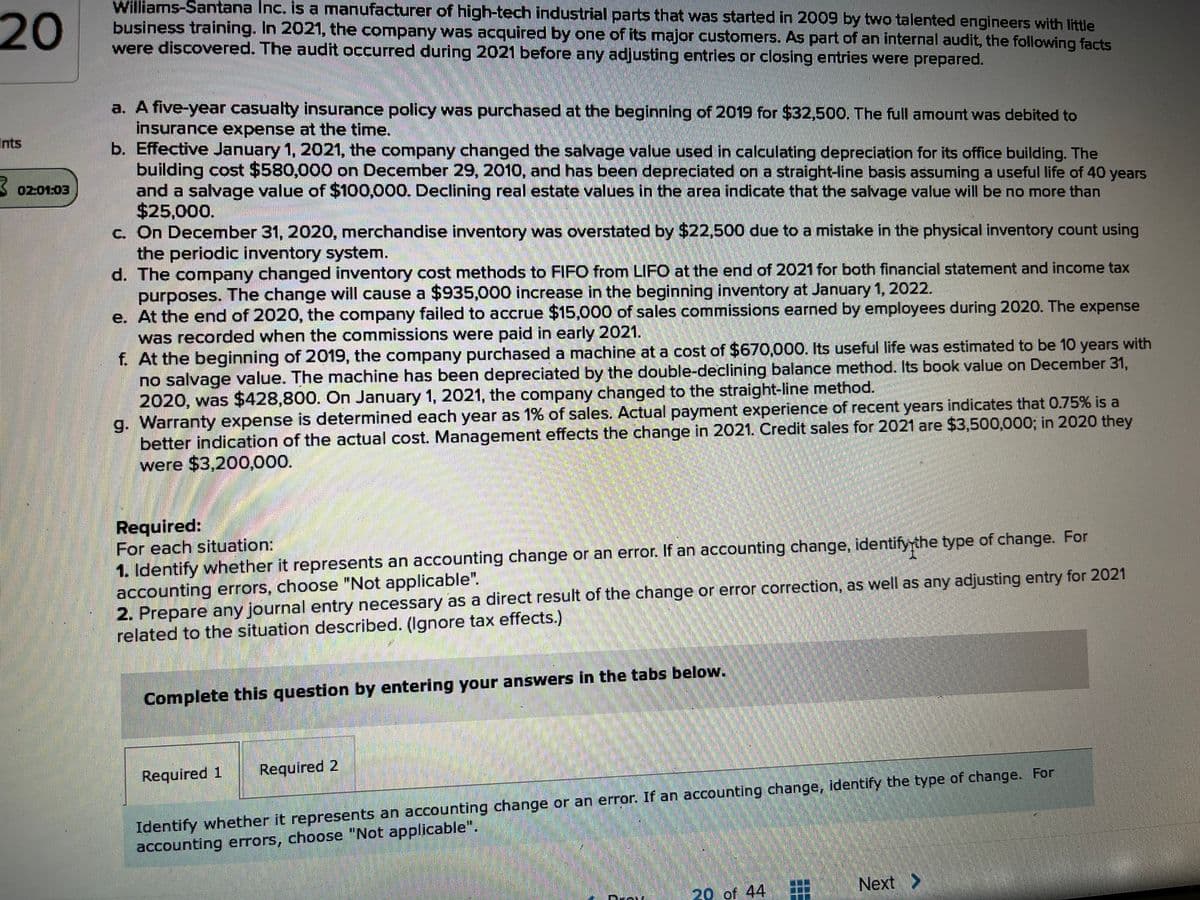business training. In 2021, the company was acquired by one of its major customers. As part of an internal audit, the following facts With little were discovered. The audit occurred during 2021 before any adjusting entries or closing entries were prepared. a. A five-year casualty insurance policy was purchased at the beginning of 2019 for $32,500. The full amount was debited to insurance expense at the time. b. Effective January 1, 2021, the company changed the salvage value used in calculating depreciation for its office building. The building cost $580,000 on December 29, 2010, and has been depreciated on a straight-line basis assuming a useful life of 40 years and a salvage value of $100,000. Declining real estate values in the area indicate that the salvage value will be no more than $25,000. c. On December 31, 2020, merchandise inventory was overstated by $22,500 due to a mistake in the physical inventory count using the periodic inventory system. d. The company changed inventory cost methods to FIFO from LIFO at the end of 2021 for both financial statement and income tax purposes. The change will cause a $935,000 increase in the beginning inventory at January 1, 2022. e. At the end of 2020, the company failed to accrue $15,000 of sales commissions earned by employees during 2020. The expense was recorded when the commissions were paid in early 2021. f. At the beginning of 2019, the company purchased a machine at a cost of $670,000. Its useful life was estimated to be 10 years with no salvage value. The machine has been depreciated by the double-declining balance method. Its book value on December 31, 2020, was $428,800. On January 1, 2021, the company changed to the straight-line method. g. Warranty expense is determined each year as 1% of sales. Actual payment experience of recent years indicates that 0.75% is a better indication of the actual cost. Management effects the change in 2021. Credit sales for 2021 are $3,500,000; in 2020 they were $3,200,000. Required: For each situation: 1. Identify whether it represents an accounting change or an error. If an accounting change, identifyythe type of change. For accounting errors, choose "Not applicable". 2. Prepare any journal entry necessary as a direct result of the change or error correction, as well as any adjusting entry for 2021 related to the situation described. (Ignore tax effects.)
Depreciation Methods
The word "depreciation" is defined as an accounting method wherein the cost of tangible assets is spread over its useful life and it usually denotes how much of the assets value has been used up. The depreciation is usually considered as an operating expense. The main reason behind depreciation includes wear and tear of the assets, obsolescence etc.
Depreciation Accounting
In terms of accounting, with the passage of time the value of a fixed asset (like machinery, plants, furniture etc.) goes down over a specific period of time is known as depreciation. Now, the question comes in your mind, why the value of the fixed asset reduces over time.

Trending now
This is a popular solution!
Step by step
Solved in 3 steps with 4 images


